70 Top Contemporary Public Artworks around the World
- david
- Jan 5, 2024
- 24 min read
Updated: Jun 13
In this article, learn what makes a contemporary public artwork and explore iconic examples curated by the Artelier team.
What is public art? Embark on an enlightening journey through the vibrant realm of public art with our comprehensive guide, featuring 70 global contemporary artworks hand-selected by the Artelier curation team.

Ella Forster
Curator, Art Research & Editorial
Ella holds a BA in History & French from King's College London, complemented by a year of international study focused on History of Art at the University of Montréal. She has first-hand experience in public art curation, strategy and installation, notably for Noor Riyadh 2023.
Go direct to:
Index: Overview on The Basics of Public Art

What is Contemporary Public Art?
Contemporary public art, beyond traditional galleries, engages communities with innovative installations, sculptures, and murals, addressing social, cultural, and environmental themes. Focused on dialogue and inclusivity, it fosters shared experiences, enriching urban landscapes and reflecting evolving societal values. This powerful tool reshapes public spaces into dynamic canvases, celebrating diversity and challenging norms.

What are the 7 types of Public Art?
Public art comes in various forms, each serving a unique purpose and engaging audiences in different ways. While categorising public art is not always straightforward due to its evolving nature, here are seven common types:
Sculptures and Installations: Often large-scale, interactive, experiences in public spaces
Murals and Street Art: Often urban, colourful and serves to identify specific neighbourhoods
Land Art: Often in rural settings, using the environment and nature as a canvas
Performance Art: Challenges traditional boundaries and engages audiences unexpectedly
Interactive Art: Emphasis on audience participation and relationship with the artwork
Digital and Media-Based Art: Uses technology and usually has interactive elements
Functional Art: Artistic elements integrated into structures to enhance aesthetics and utility
These categories are not mutually exclusive, and many public art projects may incorporate elements from multiple types. The diversity of public art reflects the evolving nature of artistic expression in communal spaces.

70 PUBLIC ARTWORKS IN THE WORLD
Artists represented by Artelier
1. Lock Level Line by Danny Lane (2003)
Artist represented by Artelier
Location: Paddington Basin, London, England
The four sculptures made of glass and steel by Danny Lane were transported down the Grand Union canal from the artist's studio as part of an effort to regenerate Paddington Basin. This artwork was part of a trail containing 22 different installations and sculptures. The sculptures skilfully use light and shadow, animating their position as perpetual dancers with shadows. Note the reflective and luminescent qualities, flexible to London's ever-changing seasons and times of day.
2. Penny Half Sphere by Giles Miller (2016) in collaboration with Artelier
Artelier represented by Artelier
Location: Broomhill Sculpture Park, Devon, England
Penny Half Sphere is a harmonious blend of hundreds of reflective stainless steel pennies suspended over a stream. Set within a gridded walnut timber framework, Giles Miller designed it to dynamically rotate in the breeze, casting reflections of surrounding trees and water. The deliberate chaos of light creates a double-sided portal, contrasting and resonating with the woodland. Referencing natural forms, the sculpture seamlessly integrates, appearing like floating pennies in midair. The Half-Penny Sphere is the studio's first outdoor, site-specific sculpture. It was commissioned as part of the Broomhill Art and Sculpture Foundation's annual National Sculpture Prize.
3. Skin Deep by Stuart Ian Frost (2012)
Location: Arte Sella, Italy
Arte Sella, established in 1986 in the picturesque Sella Valley Val di Sella, Trento, is a distinctive international outdoor art exhibition. Beyond a mere display, it embodies an ongoing creative process where artworks evolve harmoniously with nature. Stuart Frost was tasked to create an artwork that upheld a respectful relationship with the environment, crafting three-dimensional pieces from branches and tree trunks. Rarely employing man-made materials, the exhibition elegantly integrates into the surrounding woods, allowing visitors to witness nature-inspired creations that, over time, gracefully return to the natural life cycle.
4. 0121-1110=115075 by Jaehyo Lee, 2015
Location: Arte Sella, Italy
Also located in Arte Sella as well as Stuart Ian Frost, is Jaehyo Lee's 0121-1110=115075. This monumental structure explores the essence of sculptural form, delving into its function and role in the natural world. Handcrafted with an acute awareness of human design, Lee skilfully manipulates the multifaceted potential of raw materials.
UNITED KINGDOM
5. The Weather Project by Olafur Eliasson (2003)
Location: Tate Modern, London
The Weather Project by Olafur Eliasson at Tate Modern, London, is an immersive installation featuring a massive, mirrored ceiling and a glowing, artificial sun. The reflective surfaces create a surreal atmosphere, blurring the boundaries between the real and the simulated, inviting viewers to contemplate nature, perception, and the elements. The installation's popularity highlighted the public's fascination with immersive and participatory contemporary art experiences.
6. Sunflower Seeds by Ai Weiwei (2010)
Location: Tate Modern, London
Sunflower Seeds by Ai Weiwei at Tate Modern consisted of millions of hand-painted porcelain sunflower seeds, meticulously crafted by Chinese artisans. The seeds cover the floor in a vast, textured expanse, inviting contemplation of individuality within a collective, touching on themes of mass production, cultural heritage, and political commentary. Interestingly, the initial interactive element, where visitors could walk on the seeds, was later restricted due to health concerns related to dust inhalation. Ai Weiwei's concept of collective labor and individuality faced challenges, adding a layer of complexity to the artwork's interpretation and experience.
7. Illuminated River by Leo Villareal and Lifschutz Davidson Sandilands (2021)
Location: River Thames, London
Illuminated River transforms London's River Thames with dynamic LED lighting on 14 iconic bridges. The project creates a stunning nightly spectacle, celebrating the city's architectural heritage. It made headlines for its fantastic display and the fact that it's the longest public art commission of its kind globally, spanning 4.5 nautical miles.
8. Apollo Pavilion by Victor Pasmore (1969)
Location: Peterlee, County Durham, England,
Apollo Pavilion in Peterlee, County Durham, England, is a modernist concrete structure designed by artist Victor Pasmore in the 1960s. Featuring geometric shapes and murals, it was intended as a centrepiece for a new housing development. Despite controversy during its construction, it stands as a bold example of post-war public art.
9. Angel of the North by Antony Gormley (1998)
Location: Gateshead, Tyne and Wear, England
The Angel of the North in Gateshead, Tyne and Wear, England, is a colossal steel sculpture by Antony Gormley. Erected in 1998, it stands 66 feet tall with wings spanning 177 feet. This iconic landmark symbolises the region's industrial heritage and serves as a striking fusion of art and engineering. The Angel of the North has wings angled slightly forward, designed to evoke a sense of embrace and protection for the surrounding community.
Want to learn more? Check out our article Top 10 Most Famous Public Art Ever & Why They Matter.
10. Temenos by Anish Kapoor and Cecil Balmond (2009)
Location: Middlehaven, Middlesborough, England
An impressive public artwork, Temenos is a series of intertwined steel structures standing over 110 feet tall. Created by artist Anish Kapoor and engineer Cecil Balmond, it serves as a landmark in Middlesbrough's regeneration and emphasises the dynamic relationship between art, architecture, and urban renewal. The word "Temenos" is Greek for a piece of land set apart, often for a sacred purpose, reflecting the transformative impact the artwork has on its surroundings.
11. Bottle of Notes by Claes Oldenburg and Coosje van Bruggen (1993)
Location: Middlesbrough, England
This unique sculpture, created by the artistic duo Claes Oldenburg and Coosje van Bruggen, resembles an oversized bottle with a message inside. Symbolising communication and creativity, it pays homage to Captain Cook's voyages. The bottle contains etchings of significant moments in Middlesbrough's history.
The message inside the bottle represents the town's historical and cultural narratives, offering a creative and interactive exploration of local identity.
12. Ladle of Steel by Steve Tomlinson (2005)
Location: Middlesbrough, England
Crafted by artist Steve Tomlinson, Ladle of Steel stands as a tribute to Middlesbrough's industrial heritage. This sculpture resembles a ladle pouring molten steel, reflecting the town's historic significance in the iron and steel industry, while celebrating its resilience and transformation over time. Ladle of Steel is situated at the entrance of the Boho Zone, a hub for digital and creative businesses, symbolising the transition from industrial past to a modern, innovative future.
13. Silvas Capitalis by SIMPARCH (2018)
Location: Kielder, Hexham, Scotland
The eerie impact arises when the line blurs between imagination and reality, as described by Sigmund Freud. Silvas Capitalis, a colossal timber head by American artists SIMPARCH along Lakeside Way, embodies an imaginary observer witnessing the landscape's evolution over millennia. Crafted from 3000 specially shaped pieces of European Larch, the head invites visitors to enter through its mouth, climb upstairs, and peer out from its eyes, providing an immersive experience. Built without screws or nails, the artwork captures the changing environment over the last century.
14. Still Water by Nic Fiddian-Green (2011)
Location: London, England
Nic Fiddian-Green's Still Water is a bronze horse's head, capturing a moment of serene stillness. The artist is renowned for his equestrian sculptures, and this piece, with its exquisite craftsmanship, conveys a sense of tranquility and the timeless bond between humanity and horses. Still Water is part of Fiddian-Green's exploration of the spiritual and symbolic connections between horses and humans, often drawing inspiration from mythology and classical art.
15. The Singing Ringing Tree by Mike Tonkin and Anna Liu (2006)
Location: Crown Point, Burnley, Lancashire, England
This unique sound sculpture comprises pipes arranged to harness wind, producing haunting tones. Designed by Mike Tonkin and Anna Liu, The Singing Ringing Tree stands on a hill, offering both a visual and auditory experience. Its unconventional form and atmospheric melodies make it a distinctive landmark. The Singing Ringing Tree received the prestigious National Award from the Royal Institute of British Architects (RIBA) in 2007, recognising its innovative design and contribution to public art.
16. Brick Train by David Mach (1997)
Location: Darlington, England
Crafted by artist David Mach, the Brick Train sculpture in Darlington is a striking composition made entirely of bricks. This life-sized locomotive, bursting through a wall, pays homage to Darlington's rich railway heritage. It stands as a testament to industrial innovation and the enduring impact of the railway. David Mach is renowned for his large-scale sculptures using unconventional materials, showcasing a dynamic blend of creativity and craftsmanship. Brick Train is a testament to his ability to transform everyday materials into remarkable works of art.
MULTI-LOCATION ARTWORKS
17. Skyspace by James Turrell (1974-Present)
Location: Various installations worldwide, including: University of Illinois in Chicago; Rice University in Houston; Jardín Botánico Culiacán in Mexico; Stonescape in Napa Valley
Skyspace is a series of Turrell's architectural artworks designed to enhance the observer's perception of the sky and light. His work on the Skyspace series started in the 1970s and comprises more than 75 works worldwide. Visitors experience changing colours and atmospheric effects, engaging with the celestial drama. Each Skyspace is uniquely designed to complement its specific location and surroundings, offering diverse experiences worldwide.
18. Les Voyageurs by Bruno Catalano (2013-2014)
Location: Various installations worldwide, including: Marseille-Fos-Port, France; Calgary, Canada; Venice, Italy; Arcachon, France
Les Voyageurs, or The Travellers, are striking bronze sculptures featuring fragmented figures with voids, symbolising the impact of migration. The captivating, incomplete forms evoke a sense of the human condition and the challenges faced by travellers. Catalano's sculptures explore the theme of displacement and reflect the emotional and physical struggles of people on their journeys.
19. Forever Bicycles by Ai Weiwei (2014)
Location: Various installations worldwide, including Austin, Texas
Ai Weiwei's Forever Bicycle is a monumental sculpture constructed from hundreds of interconnected bicycles, creating a visually striking and intricate network. The bicycles, a symbol of China's rapid modernisation, are skilfully arranged to form a dynamic and complex structure. Serving as a commentary on the tension between tradition and progress, this iconic artwork has been exhibited worldwide, contributing to Ai Weiwei's reputation as a leading figure in contemporary art and activism.
20. Love Me Sculptures by Richard Hudson (2016-2018)
Location: Various installations worldwide, including: Vancouver, Canada; Taipei, Taiwan; Dubai Mall, United Arab Emirates; Donum Sculpture Park, California, United States
Love Me, a heart-shaped sculpture crafted from reflective stainless steel, invites viewers to engage with their reflections. Hudson's work explores the theme of self-love and reflection in the context of urban environments. Richard Hudson's sculptures often use mirrored surfaces, encouraging viewers to connect with the artwork on a personal and reflective level.
21. The Force of Nature by Lorenzo Quinn (2008-2019)
Location: Various installations worldwide, including: London, United Kingdom; Venice, Italy
Lorenzo Quinn is the son of the famous actor Anthony Quinn and is renowned for his public art installations that convey powerful messages about environmental and societal issues. Quinn's monumental sculptures depict gigantic hands emerging from the ground, emphasising the powerful impact of nature and human influence. The hands symbolise our ability to shape the world positively or negatively.
22. The Wings of the City by Jorge Marín (2010)
Location: Various installations worldwide, including: Mexico City; The Hague, Netherlands; Dubai, United Arab Emirates
Marín's bronze sculptures feature winged figures, exploring themes of freedom and transformation. The wings represent the aspiration for harmony and unity in diverse cultures. The sculptures have traveled to significant international venues, fostering cultural exchange and dialogue. By 2020, permanent versions of them have been erected in thirteen cities on four continents.
23. SKALAR by Christopher Bauder and Kangding Ray (2021)
Location: Various international locations, including Berlin, Germany.
SKALAR is a mesmerising audiovisual installation that merges the talents of Christopher Bauder and Kangding Ray. The immersive experience explores the synergy between light, sound, and movement through large-scale kinetic sculptures and a captivating electronic soundtrack. With its global touring exhibitions, SKALAR has enthralled audiences worldwide, showcasing the transformative power of interdisciplinary collaboration and pushing the boundaries of sensory perception in contemporary art installations.
24. Cupola by Ilya and Emilia Kabakov (2003)
Location: Various locations worldwide, including permanent installations in museums like the State Hermitage Museum in St. Petersburg.
The Cupola by the Kabakovs is a thought-provoking installation featuring a small, enigmatic cupola placed atop a precarious-looking structure. This piece captures the essence of the Kabakovs' conceptual art, inviting viewers to ponder the symbolic meanings embedded within its structure. Its adaptability to different exhibition spaces allows for varied interpretations, adding a layer of universality to its intriguing narrative on the human condition and the pursuit of transcendence.
25. Maman by Louise Bourgeois (1999)
Location: Various locations worldwide, including National Gallery of Canada, the Guggenheim in Spain, London’s Tate Modern, and the Leeum, Samsung Museum of Art in Seoul.
Maman, a monumental sculpture by artist Louise Bourgeois, stands in various locations. Depicting a spider, it is one of the world's largest, measuring over 30 ft high and 33 ft wide, with a sac containing 32 marble eggs. Originally part of The Unilever Series at London's Tate Modern, the stainless steel original was created in 1999, with subsequent bronze castings. The spider symbolises Bourgeois' mother, Josephine, evoking themes of strength, weaving, nurture, and protection.
Take a closer look at Maman here.
26. Infinity Mirrored Room by Yayoi Kusama (2013)
Location: Various locations worldwide, including Broad Collection, Los Angeles, David Zwirner Gallery, New York, Seattle Art Museum, Seattle
Yayoi Kusama's Infinity Mirrored Room, created in 2013, is a mesmerising installation featuring endless reflections of LED-lit spheres within a mirrored space. Viewers step into a seemingly infinite universe, surrounded by sparkling lights that create a surreal and otherworldly ambiance. Kusama's avant-garde work explores themes of infinity, self-reflection, and the boundless nature of the cosmos.The installation's popularity has led to long waiting lines at exhibitions, showcasing the enduring fascination and impact of Kusama's immersive environments on contemporary art enthusiasts.
UNITED STATES OF AMERICA
27. World’s Largest Ball of Paint by Michael Carmichael (1977-Present)
Location: Alexandria, Indiana, USA
A quirky roadside attraction, the World’s Largest Ball of Paint began as a small baseball, but can be now seen as a transformative piece of contemporary art. Over decades, visitors have added layers of paint, transforming it into a multicoloured marvel. Tourists can contribute to its growth, and each layer represents a unique story, making it an ever-evolving community artwork. Started in 1977, the ball now weighs several tons and holds a Guinness World Record for the largest paintball.
28. Bridge Over Tree by Siah Armajani (2019)
Location: Minneapolis Sculpture Garden, Minneapolis, USA
Siah Armajani's Bridge Over Tree is a captivating blend of architecture and nature. Located in the Minneapolis Sculpture Garden, the artwork features a functional pedestrian bridge arching over a living tree. Symbolising the intersection of human-made structures and the organic world, the installation invites contemplation on the coexistence of urban development and the environment. Armajani's creation bridges the gap between artistic expression and ecological awareness in a harmonious and thought-provoking manner.
29. Non Violence by Carl Fredrik Reuterswärd (1984)
Location: United Nations Headquarters, New York City, USA
A powerful symbol of peace and anti-gun violence, Non Violence features a knotted revolver barrel with a twisted, non-functional shape. Placed outside the UN, it serves as a call for disarmament and an enduring reminder of the need for global peace. Inspired by the assassination of John Lennon, Reuterswärd created the sculpture in memory of the musician and as a plea for a nonviolent world.
30. Freedom by Zenos Frudakis (2000)
Location: Philadelphia, Pennsylvania, USA
Zenos Frudakis’ dynamic bronze sculpture, Freedom, captures the struggle for freedom and self-determination. Depicting figures emerging from a block, it symbolises the eternal quest for liberty and the courage needed to break free from constraints. The sculpture has become a symbol of hope and inspiration, resonating with people worldwide.
31. Cloud Gate (The Bean) by Anish Kapoor (2006)
Location: Millennium Park, Chicago, USA
Anish Kapoor's Cloud Gate, affectionately known as "The Bean," is a reflective, seamless sculpture that distorts and mirrors the Chicago skyline. A public magnet, it invites interaction, capturing the essence of the city and its people in its polished surface. The seamless stainless-steel surface consists of 168 polished plates, seamlessly welded to create the mirror-like effect.
32. Spoonbridge and Cherry by Claes Oldenburg (1988)
Location: Minneapolis Sculpture Garden, Minneapolis, USA
Claes Oldenburg's Spoonbridge and Cherry is a whimsical sculpture featuring a giant spoon with a cherry balanced on its tip. It's an iconic symbol of the Minneapolis Sculpture Garden, merging everyday objects with monumental scale to create a playful and visually striking landmark. The spoon's bowl serves as a reflecting pool, adding an interactive element to the artwork.
33. Clothespin by Claes Oldenburg (1976)
Location: Centre Square Plaza, Philadelphia, Pennsylvania, USA
Clothespin is a monumental sculpture by Claes Oldenburg, resembling a common clothespin. Situated in Centre Square Plaza, it stands as a playful and iconic symbol of Philadelphia's commitment to public art, provoking dialogue about the intersection of art and daily life. Initially controversial, the sculpture has become a beloved and recognisable landmark in Philadelphia over the years.
34. Prada Marfa by Michael Elmgreen and Ingar Dragset (2005)
Location: Las Colinas, Texas, USA
Prada Marfa is a permanent, site-specific installation featuring a Prada storefront in the Texan desert, showcasing real Prada products. It's a curious blend of luxury, art, and isolation, questioning consumerism's place in remote landscapes. The products inside the store are real, but the door cannot be opened, making it an art installation rather than a functional store.
35. Urban Light by Chris Burden (2008)
Location: Los Angeles County Museum of Art, California, USA
Urban Light is an outdoor installation featuring 202 vintage street lamps arranged symmetrically. Illuminating the entrance to LACMA, it serves as a monumental sculpture, inviting interaction and exploration in the heart of Los Angeles. The lampposts in Urban Light are functional; each one has been restored to working order, contributing to the city's urban landscape.
36. Giant Binoculars by Claes Oldenburg and Coosje van Bruggen (1991)
Location: Chiat/Day Building, Venice, Los Angeles, California, USA
Giant Binoculars is a 45-foot high sculpture, part of the Chiat/Day office building. Its whimsical design adds a touch of humour to the urban environment, transforming everyday objects into public art. The binoculars are positioned to overlook the bustling streets of Venice in Los Angeles, creating a dynamic interplay between art and the surrounding city.
37. Spiral Jetty by Robert Smithson (1970)
Location: Rozel Point, Great Salt Lake, Utah, USA
Huge in scale, Spiral Jetty is a 1,500-foot-long coil of rocks and earth extending into the Great Salt Lake. Its appearance fluctuates with the water level, offering a dynamic interplay between nature and art. Originally created with basalt rocks, the work has become an iconic example of land art, symbolising the ephemeral nature of art and the environment.
Read more in depth analysi
38. The Gates by Christo and Jeanne-Claude (2005)
Location: Central Park, New York City, USA
The Gates was a temporary public art installation featuring 7,503 gates adorned with flowing orange fabric panels along Central Park's pathways. The vibrant, ephemeral display transformed the iconic park into a visual spectacle. The artists financed The Gates entirely through the sale of their preparatory drawings, collages, and scale models, refusing sponsorship.
CANADA

39. A-maze-ing Laughter by Yue Minjun (2009)
Location: Morton Park, Vancouver, Canada
This installation comprises 14 colossal bronze statues depicting a single figure in various states of uproarious laughter. The exaggerated expressions create an immersive and whimsical atmosphere, inviting viewers to participate in the contagious joy. The artist, Yue Minjun, often incorporates self-portraits in his works, exploring themes of identity and emotion.

40. Digital Orca by Douglas Coupland (2010)
Location: Vancouver Convention Centre, Vancouver, Canada
Douglas Coupland is a Canadian artist and writer known for his exploration of contemporary culture and technology in his works. This public sculpture reinterprets the iconic killer whale in a pixelated, geometric form. The juxtaposition of the natural subject with a digital aesthetic prompts reflection on the intersection of nature and technology.

41. Alberta’s Dream by Jaume Plensa (2012)
Location: The Bow Building, Calgary, Canada
Jaume Plensa is renowned for his use of language and spirituality in his sculptures, fostering contemplation and connection. This self-portrait cast sculpture features a serene, elongated figure composed of white steel letters detailing numerous Alberta communities with Edmonton being across the chest and Calgary on the back, creating a harmonious blend of language and art. The artwork symbolises the dreams and aspirations of the people of Alberta. The figure hugs a tree, critically turning its back from The Bow and what it symbolically represents (capitalism, oil, and gas).
ARGENTINA

42. Floralis Genérica by Eduardo Catalano (2002)
Location: Plaza de las Naciones Unidas, Buenos Aires, Argentina
Eduardo Catalano's Floralis Genérica is a monumental steel and aluminium flower sculpture that stands in the heart of Buenos Aires. The kinetic artwork symbolises the perpetual cycle of life, with its petals opening and closing based on the time of day. Notably, the sculpture was a gift to the city from the artist, adding an altruistic touch to its captivating representation of nature's beauty and transience.
GERMANY

43. Memorial to the Murdered Jews of Europe by Peter Eisenman (2005)
Location: Berlin, Germany
Designed by architect Peter Eisenman, this Holocaust memorial consists of 2,711 concrete slabs arranged in a grid. Symbolising the profound loss during the Holocaust, the memorial invites contemplation and reflection. Its stark and abstract design evokes a powerful emotional response, fostering remembrance and education. The memorial site also houses an underground Information Centre, providing historical context and personal stories related to the Holocaust, enriching the visitor's understanding and experience.

44. The East Side Gallery by Various Artists (1990)
Location: Berlin, Germany
The East Side Gallery is a 1.3 km-long section of the Berlin Wall adorned with over 100 murals. Created by international artists after the fall of the Wall, these vibrant artworks symbolise hope, unity, and the end of division. It stands as an open-air gallery, preserving a historic moment. The East Side Gallery is the longest open-air gallery in the world, attracting visitors with its powerful and diverse expressions of art and political commentary.
FRANCE
45. Le Pouce by César Baldaccini (1983)
Location: Paris, France
César Baldaccini's Le Pouce is a monumental thumb sculpture in the La Défense business district. Crafted from bronze, it humorously subverts traditional notions of public art. The colossal thumb becomes a symbol of strength and resilience in the heart of a financial hub. César, known for his innovative approach to materials, was a prominent figure in the Nouveau Réalisme movement, challenging artistic norms through unconventional mediums.
46. Les Colonnes de Buren by Daniel Buren (1986)
Location: Palais Royal, Paris, France
Daniel Buren's Les Colonnes de Buren features a grid of striped columns in the inner courtyard of the Palais Royal. The rhythmic installation engages with the architectural space, creating a visually dynamic experience that challenges perceptions of public art and its surrounding historical context. Buren is known for his use of stripes as a signature motif. The controversy surrounding Buren's work initially led to its removal, but public demand resulted in its eventual reinstatement in 1986, solidifying its place as a Parisian cultural landmark.
47. Stravinsky Fountain by Jean Tinguely (1983)
Location: Paris, France
The Stravinsky Fountain, co-created by Jean Tinguely and Niki de Saint Phalle, is a kinetic sculpture near the Centre Pompidou. Inspired by composer Igor Stravinsky, the whimsical and colourful fountain features playful and moving sculptures, creating an interactive and lively public space. Tinguely's mechanical sculptures, incorporating movement and sound, were designed to celebrate Stravinsky's music through a dynamic and ever-changing visual spectacle.
48. Monumenta Series by Various Artists (2007 - Present)
Location: Grand Palais, Paris, France
The Monumenta Series transforms the Grand Palais into an ever-changing space for monumental contemporary art installations by various artists. Each year, a new artist takes on the challenge of filling the vast space with immersive and thought-provoking works, making it a dynamic platform for artistic exploration and expression. Previous Monumenta exhibits have included works by Anselm Kiefer, Richard Serra, Christian Boltanski, Anish Kapoor, Daniel Buren and Ilya and Emilia Kabakov.
SPAIN

49. Puppy by Jeff Koons (1992)
Location: Guggenheim Museum, Bilbao, Spain
Towering outside the Guggenheim Museum, Jeff Koons' Puppy is a colossal floral sculpture of a West Highland White Terrier. The playful juxtaposition of a cute, giant puppy covered in vibrant flowers against the museum's modern architecture captivates visitors, creating a harmonious blend of art and nature. The flowers covering Puppy change with the seasons, ensuring a constantly evolving and visually stunning experience for onlookers.
ITALY
50. The Floating Piers by Christo and Jeanne-Claude (2016)
Location: Lake Iseo, Italy
Christo and Jeanne-Claude's The Floating Piers involved creating a system of floating walkways covered in vibrant yellow fabric, connecting islands on Lake Iseo. The immersive experience allowed visitors to walk on water, interacting with the environment. It showcased the ephemeral beauty of large-scale, site-specific installations. The fabric used for the piers was specifically designed to withstand the elements and the impact of thousands of visitors, emphasising the meticulous planning and engineering behind the temporary but impactful installation.
Submerge yourself in the yellow hues of The Floating Piers further in our essay, All About Yellow.
CROATIA

51. Sea Organ by Nikola Bašić (2005)
Location: Zadar, Croatia
A unique sea organ that creates music by harnessing the energy of waves, turning the waterfront into a sonorous and interactive space, symbolising the harmony between nature and art. Nikola Bašić, the architect behind the Sea Organ, received the European Prize for Urban Public Space in 2006 for this innovative and harmonious installation.
HUNGARY

52. Feltépve by Ervin Loránth Hervé (2014)
Location: Budapest, Hungary
Ervin Loránth Hervé's enigmatic artwork in Budapest features a colossal ogre-like creature, evoking both awe and curiosity. The sculpture, crafted with meticulous detail, adds a fantastical element to the urban landscape. The artist's intention was to spark imagination and provoke thought about the intersection of mythology and reality. The giant Ogre-like creature invites viewers to ponder the boundaries between the mystical and the tangible, creating a whimsical and thought-provoking experience.

53. The Shoes on the Danube Bank by Can Togay and Gyula Pauer (2005)
Location: Danube Promenade, Budapest, Hungary
This poignant memorial along the Danube River, conceived by Can Togay and Gyula Pauer, commemorates the tragic events of World War II. The sculpture features iron shoes of various styles and sizes, symbolising the Jewish victims who were ordered to remove their shoes before being shot and falling into the river. An emotionally charged homage, the artwork invites reflection on the human cost of war and intolerance.
CZECH REPUBLIC

54. Franz Kafka’s Head by David Černý (2014)
Location: Franz Kafka Square, Prague, Czech Republic
David Černý's avant-garde sculpture, Frank Kafka’s Head, is a striking and surreal depiction of the renowned Czech writer. Composed of rotating layers, the kinetic artwork challenges traditional representations, reflecting Kafka's complex and enigmatic literary legacy. The sculpture invites viewers to interpret Kafka's ever-changing perspectives and delves into the artist's exploration of the fluid nature of identity and perception in the context of Kafkaesque themes.
AUSTRALIA

55. Inside Australia By Antony Gormley (2003)
Location: Lake Ballard, Western Australia
Consisting of 51 individual sculptures spread across the vast salt flats, this installation represents a cross-section of the local community. Each figure is based on a resident, reflecting the diversity and stories of the region. The artwork engages with the vast landscape, acting as a dialogue between humanity and nature. Antony Gormley described the project as "a celebration of the particular qualities of the people who live in the region," making it a unique and site-specific exploration of identity and connection.
NEW ZEALAND

56. Jacob’s Ladder by Gerry Judah (2017)
Location: Gibbs Farm Sculpture Park, New Zealand
Gibbs Farm, a vast open-air sculpture park near Auckland, New Zealand, spans a thousand acres and showcases over thirty monumental sculptures by international artists, commissioned over twenty-six years by Alan Gibbs. Standing at 34 meters (112 feet), Jacob's Ladder comprises 46 tonnes of square-sectioned steel tubes, 480 lengths stacked with varying lengths and sizes. The final elegant curve results from strategic shifts and rotations, showcasing creativity with initially straight steel sections.
JAPAN
57. The Yellow Pumpkin by Yayoi Kusama (1994)
Location: Naoshima, Japan
Yayoi Kusama's iconic The Yellow Pumpkin graces the tranquil island of Naoshima. This vibrant sculpture, with its whimsical polka dots and distinctive shape, stands at the water's edge, creating a surreal contrast against the serene seascape. Beyond its visual allure, the pumpkin has become a symbol of Naoshima's transformation into an art destination. Kusama's integration of art into the natural environment invites contemplation and joy, making it a beloved landmark.
58. Star by Tokujin Yoshioka (2022)
Location: Tokyo Midtown, Japan
Tokujin Yoshioka introduces Star, a 10-metre sculpture at Tokyo Midtown Yaesu's entrance. Composed of 2,000 stainless steel octagonal and mirrored rods, the artwork creates captivating crystalline effects, reflecting sunlight and emanating luminosity. Yoshioka intends the sculpture as a gift, symbolising a wish for world peace and unity, echoing the longstanding symbolic connection of stars with hope.
59. Cloud by Leandro Erlich (2011)
Location: IINO Building, Uchisaiwaicho, Japan
Leandro Erlich's Cloud appears ethereal and weightless, a stark contrast to the bustling urban environment of one of the world's largest cities. Amidst the enduring concrete structures and the ceaseless activity of ambitious individuals, the artwork brings forth a profound sense of silence—a rare commodity in the vibrant metropolis of Tokyo. Cloud offers a hyper-realistic experience, stripping away colours and forms, challenging the conventions of traditional art. Upon deeper reflection, themes of temporality, lightness, peace, and freedom emerge, making this seemingly simple artwork a rich source of contemplation and inspiration.
60. Work 2012 by Kimiyo Mishima (2012)
Location: Tennozu Isle, Shinagawa, Japan
Positioned in Tennozu Isle, Shinagawa, her sculpture features an oversized trash can housing giant ceramic replicas of commonplace items like kiwifruit, sake, and cigarettes. Influenced by American Pop artists like Claes Oldenburg and Andy Warhol, her work also engages with postwar Japanese collectives such as Gutai and Dokuritsu Art Association, showcasing a diverse artistic lineage.
SINGAPORE
61. 24 Hours in Singapore by Baet Yeok Kuan (2015)
Location: Asian Civilisations Museum, Singapore
A commission by Public Art Trust, this artwork merges sculpture and sound. Artist Baet crafted large stainless steel spheres containing audio recordings of distinctive Singaporean sounds. From hawker centres to public transport, the installation transforms everyday life into art
62. Singapore Soul by Jaume Plensa (2011)
Location: Ocean Financial Centre, Singapore
Symbolising Singapore's unity and multicultural essence, this sculpture portrays a sitting figure intricately crafted from steel. The figure, formed by Chinese, Tamil, English, and Malay language words, invites viewers inside, enveloping them in a tapestry of languages. Illuminated in white at night, the sculpture radiates with words like "unity," "Country," and "happiness," celebrating diversity and harmony.
63. Reclining Figure by Henry Moore (1938)
Location: OCBC Centre, Singapore
Crafted by renowned sculptor Henry Moore, this artwork blurs the lines between abstraction and figuration. Moore, known for suggestive reclining female figures, employs a play of positive and negative space to distort the form into a fluid shape. Measuring over 10 meters, this sculpture, positioned by the water, represents a serene, contemplative presence.
64. Planet by Marc Quinn (2008)
Location: OCBC Centre, Singapore
Derived from Quinn's earlier piece 'Innoscience,' this large-scale bronze sculpture, titled Planet, was commissioned by Chatsworth House for its formal gardens. Representing Quinn's first son and his severe milk allergy diagnosis, the work, in painted bronze and steel, measures nearly 10 meters by almost 4 meters. Despite its emphasis on life's fragility, the sculpture's immense scale creates an illusion of weightlessness, challenging our perception of time and space.
SOUTH AFRICA
65. Nelson Mandela by Marco Cianfanelli (2012)
Location: Capture Site, Howick, South Africa
Marco Cianfanelli's masterful sculpture commemorates Nelson Mandela and his pivotal role in South Africa's history. Situated at the Capture Site, where Mandela was arrested in 1962, the artwork is a series of steel columns that, when viewed from a specific angle, form Mandela's profile. This ingenious design symbolises the complexity and multifaceted nature of Mandela's life and legacy, engaging viewers in a profound exploration of the leader's impact on the nation.
UNITED ARAB EMIRATES
66. The Sail by Mattar Bin Lahej (2021)
Location: Dubai, UAE
Mattar Bin Lahej's artwork graces Dubai's skyline as a majestic symbol of modernity and maritime heritage. The artwork, a monumental sail-shaped structure, seamlessly blends traditional Emirati design with contemporary aesthetics. Rising from the cityscape, it evokes the spirit of Dubai's seafaring history while embracing its futuristic vision. The Sail not only captures the essence of the city's evolution but also serves as a dynamic emblem of cultural continuity and innovation.
67. Self Similar by Jim Denevan (2023)
Location: Abu Dhabi's Fahid Island, UAE
In Abu Dhabi, artist Jim Denevan presents Self Similar, a monumental land art installation featured in the city-wide light art exhibition, Manar Abu Dhabi. Covering nearly one square kilometre and rising to twenty-seven meters on Fahid Island, the work intersects urban and desert landscapes, bordered by the Arabian Sea. Originating as a simple circle drawn in Abu Dhabi's sands, Self Similar has grown into one of the largest land art installations. Nineteen concentric rings of 448 pyramids symbolise transience and nature's connection, inviting visitors to actively engage with the mandala-like pattern.
68. Al-Duroob by Latifa Saeed (2023)
Location: Abu Dhabi, UAE
Comprising 5,000 glass bricks, this striking structure features an undulating wall design that dynamically alternates between veiling and unveiling, constriction and contraction, and boundlessness and restriction. According to Saeed, the platform fosters open dialogue between UAE and international artists, showcasing the nation's flourishing art scene as a testament to creativity, expression, and societal vibrancy.
SAUDI ARABIA
69. Camouflage 2.0 by Zeinab AlHashemi (2022)
Location: Desert X Alula, Saudi Arabia
Camouflage 2.0, a clever blend of "camel" and "camouflage," draws inspiration from the seamless integration of camels into desert landscapes. This installation presents a captivating desert scene, featuring abstract camel silhouettes emerging from the landscape. Crafted from carefully selected camel breeds, the rock-like sculptures showcase the natural shades of camel hair. Beyond aesthetics, the artwork symbolises the desert's magnificence and serves as a reminder of the site's transformation into a public art park, inviting all to explore and appreciate nature's masterpiece.
70. Geography of Hope by Abdullah AlOthman (2022)
Location: Desert X Alula, Saudi Arabia
This artwork captures the experience of reaching out to the mirage, transforming it into tangible reality in AlUla desert. For desert dwellers, the mirage is more than an illusion; it instills hope, patience, and the luxury of dreaming, propelling them forward with visions of water. Crafted from stainless steel, the piece intertwines with light refraction, creating a radiant space that symbolises the enduring hope and deliverance embedded in the desert's cultural and Islamic heritage.
Do you have a Project that requires Public Art?
As public and landscape art consultants, Artelier has specialist expertise in developing art strategies and commissioning bespoke installations and sculptures.
Our projects have spanned varied public realm spaces, including: mixed use developments, corporate contexts, public parks, sculpture gardens, residential developments, landscapes and temporary installations.
To learn more about our turn-key art consultancy services and our process for commissioning artworks, visit our Public Art page here.














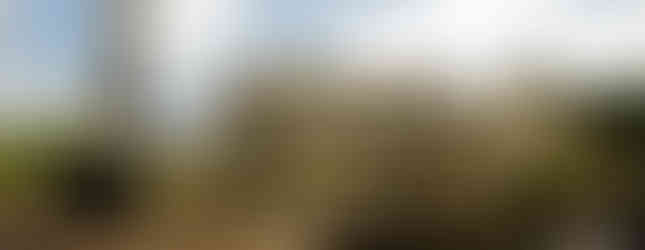












































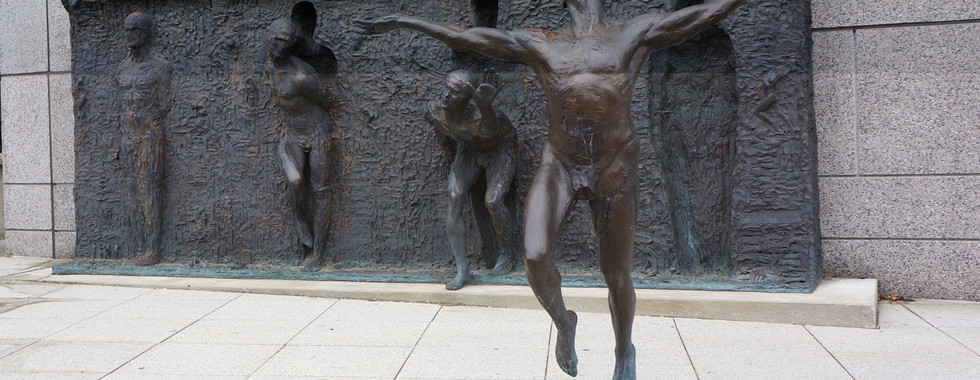



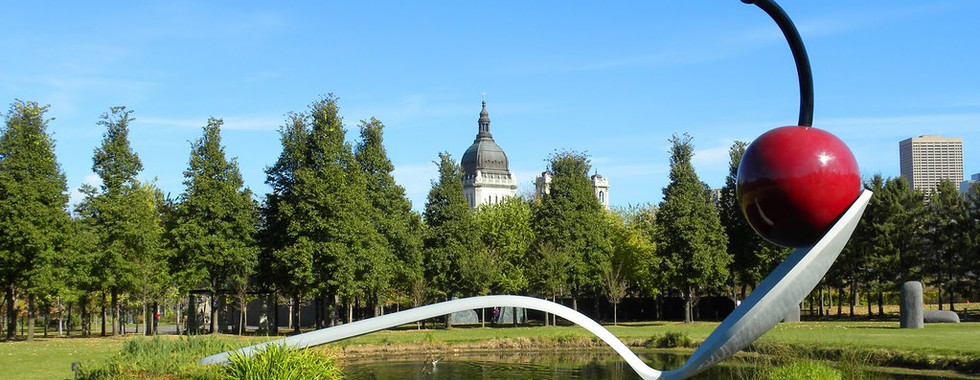







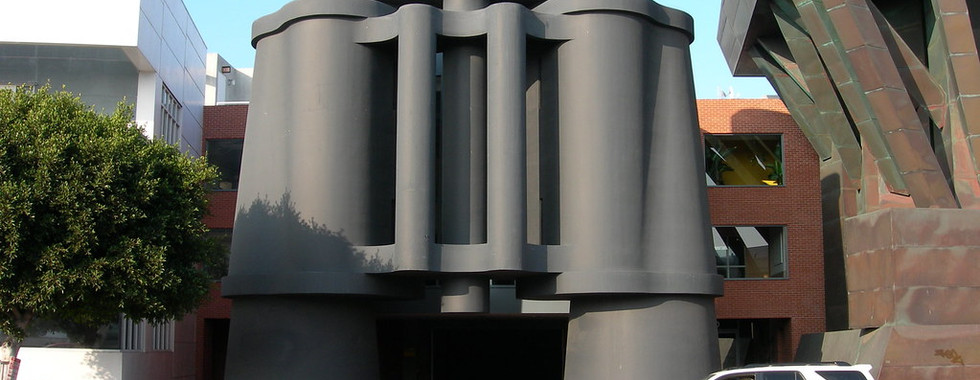




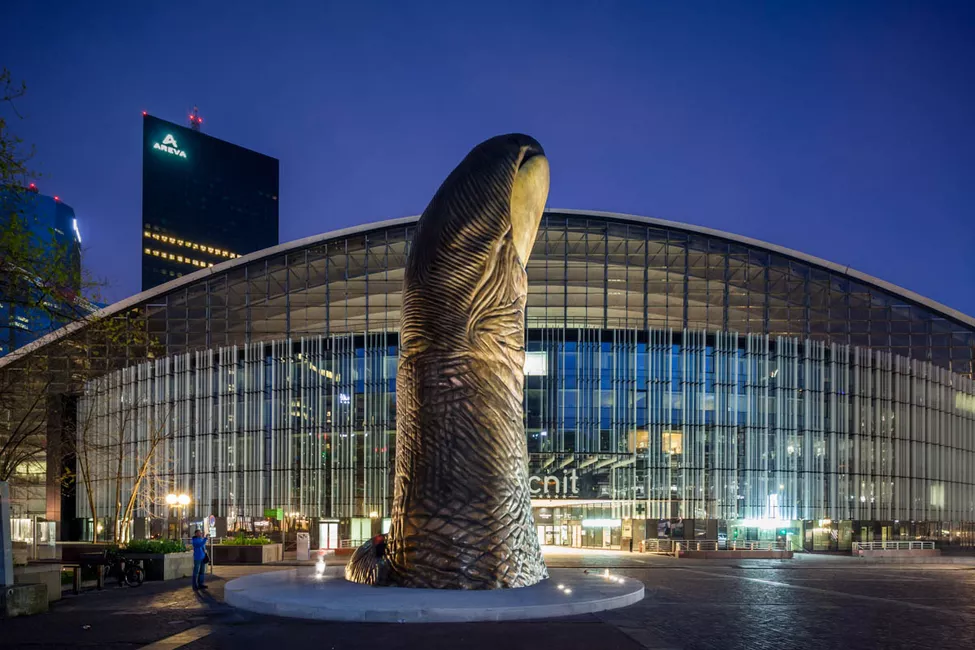












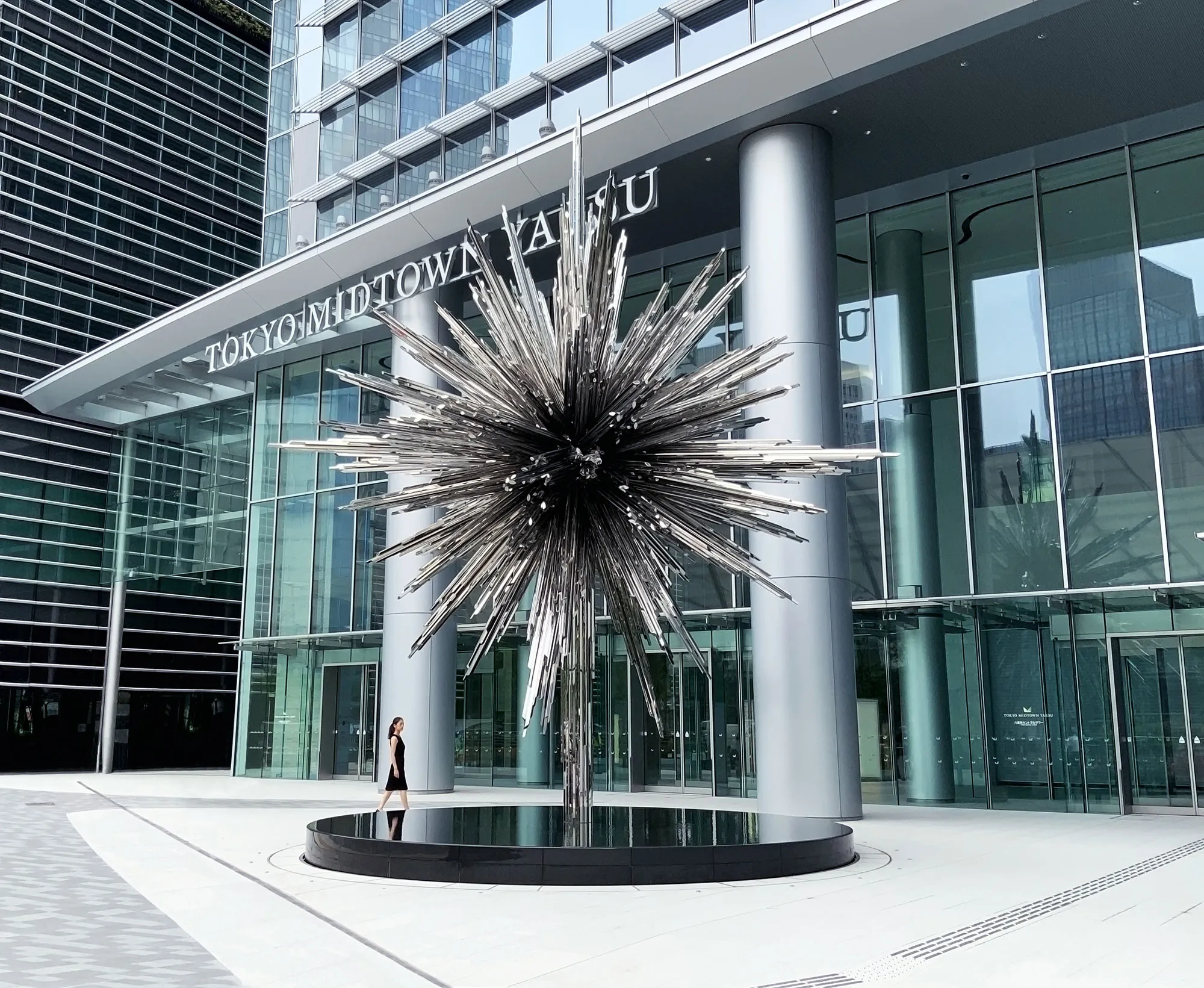














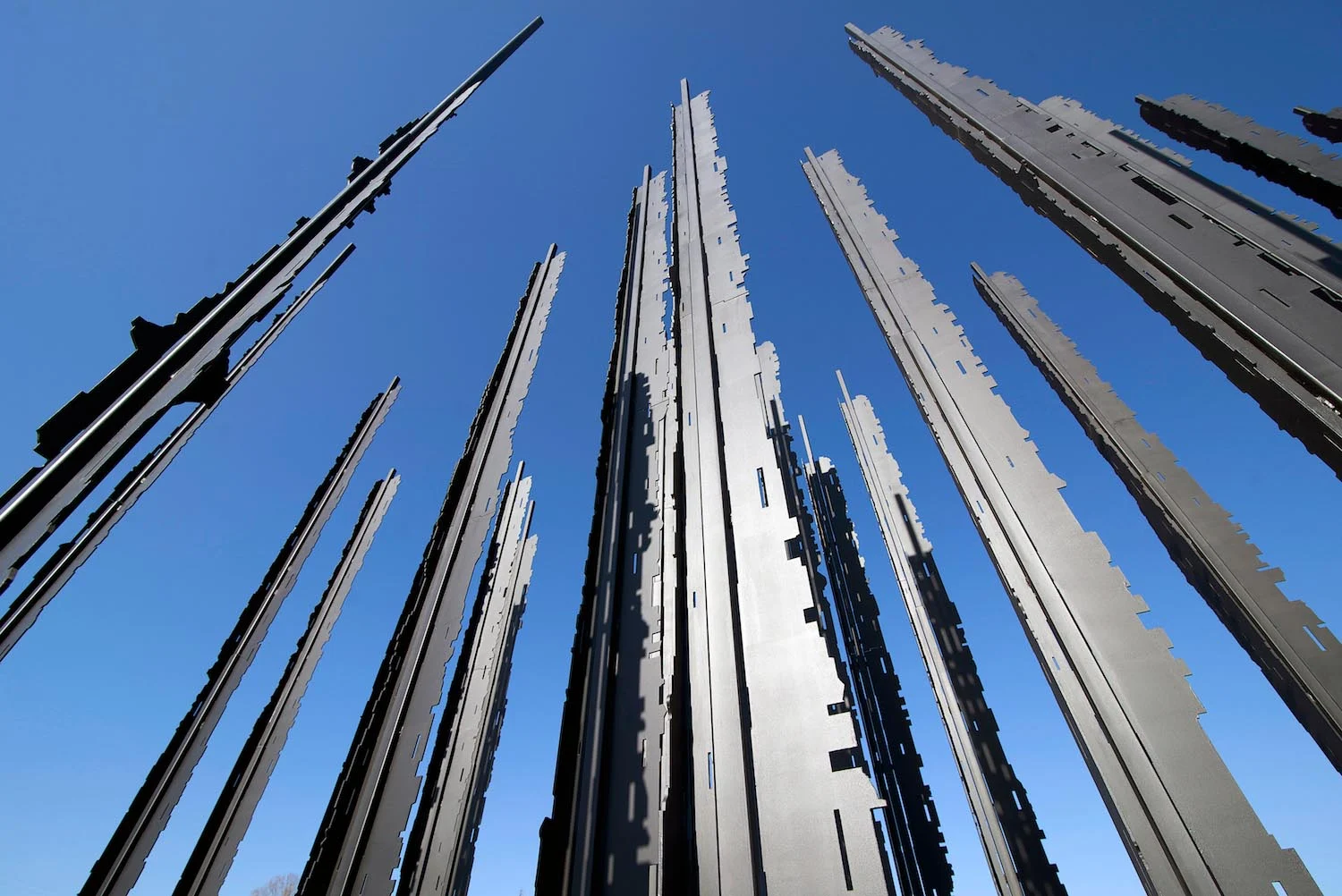

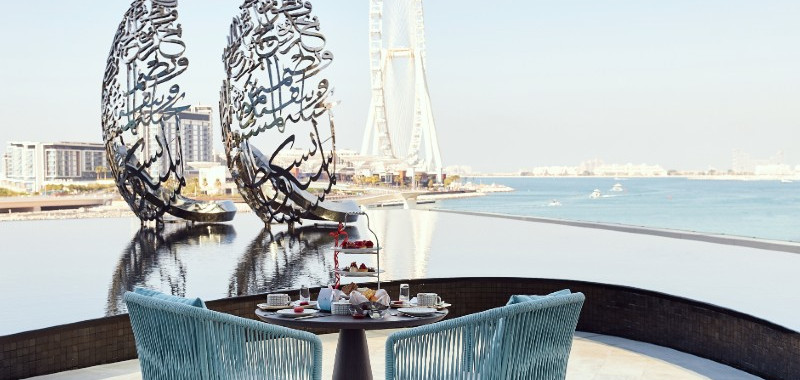




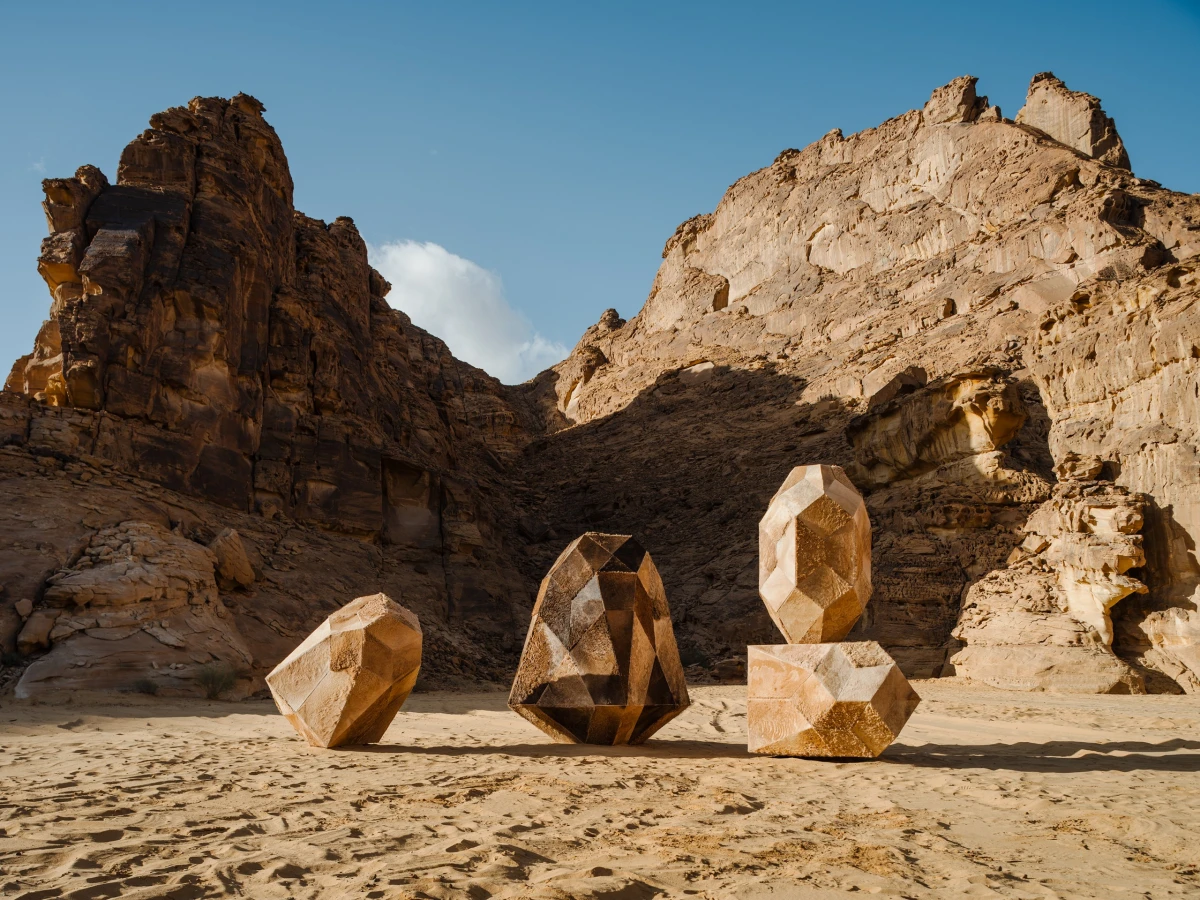




Interesting. Great to see Digital Orca the project I ran for the convention centre in vancouver. Also worked with Anish on his first public work in 1992 through 1995.